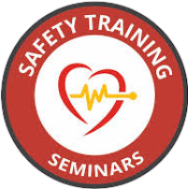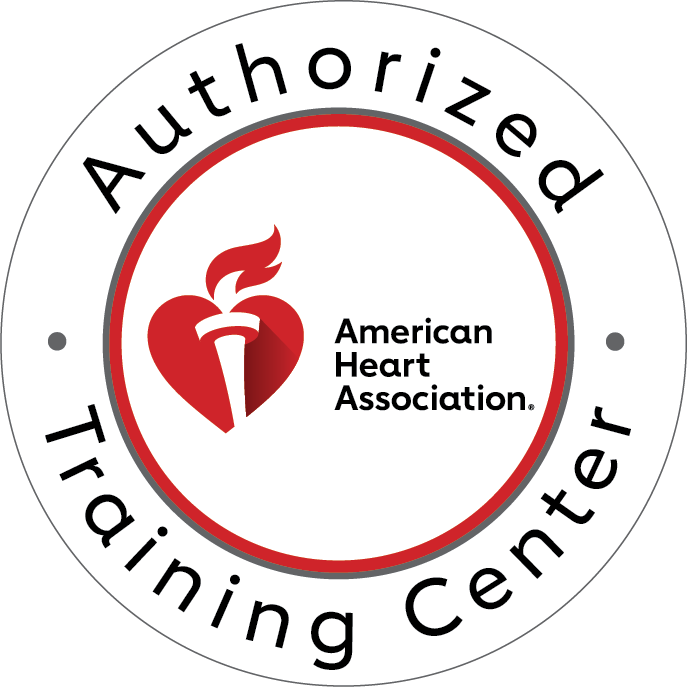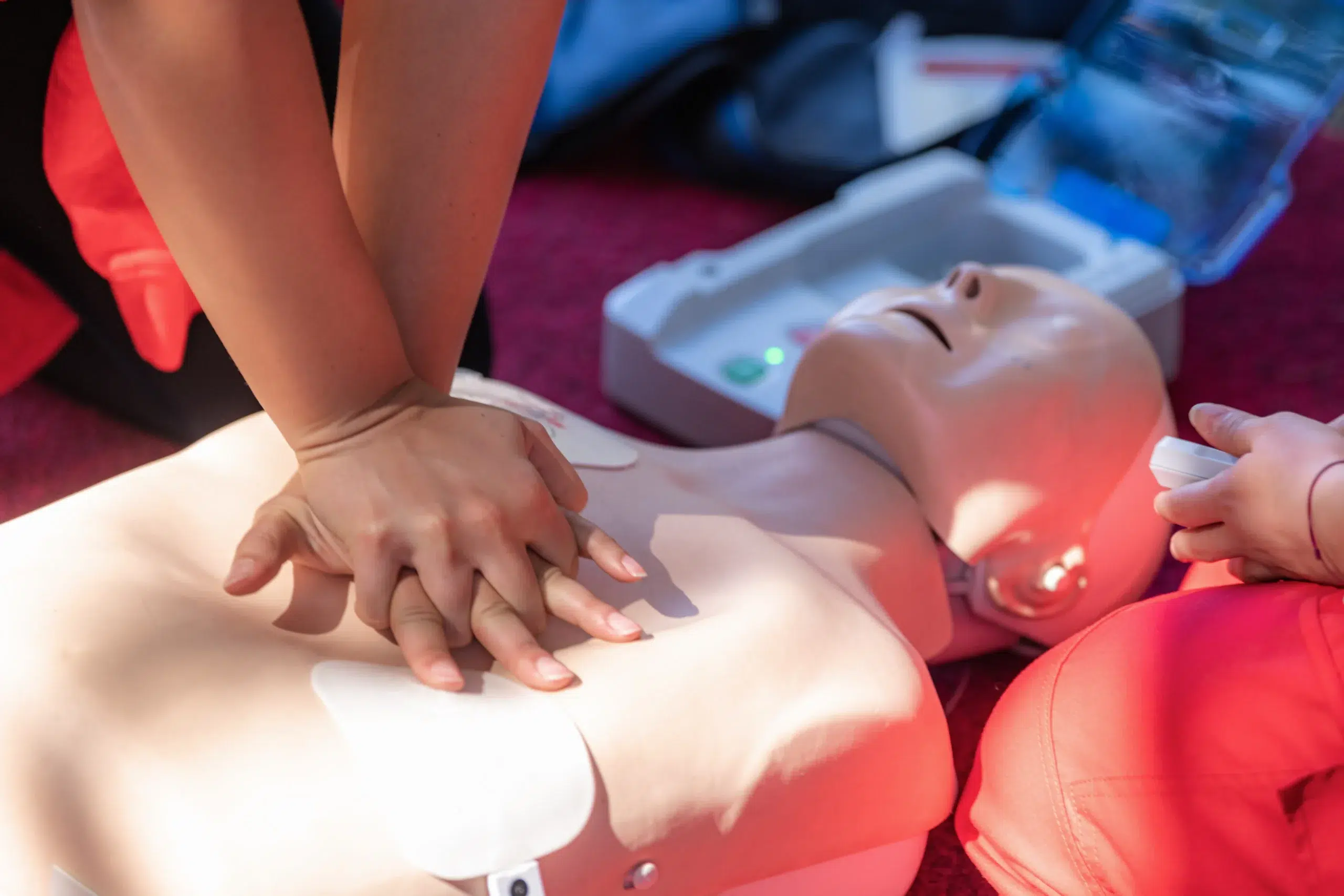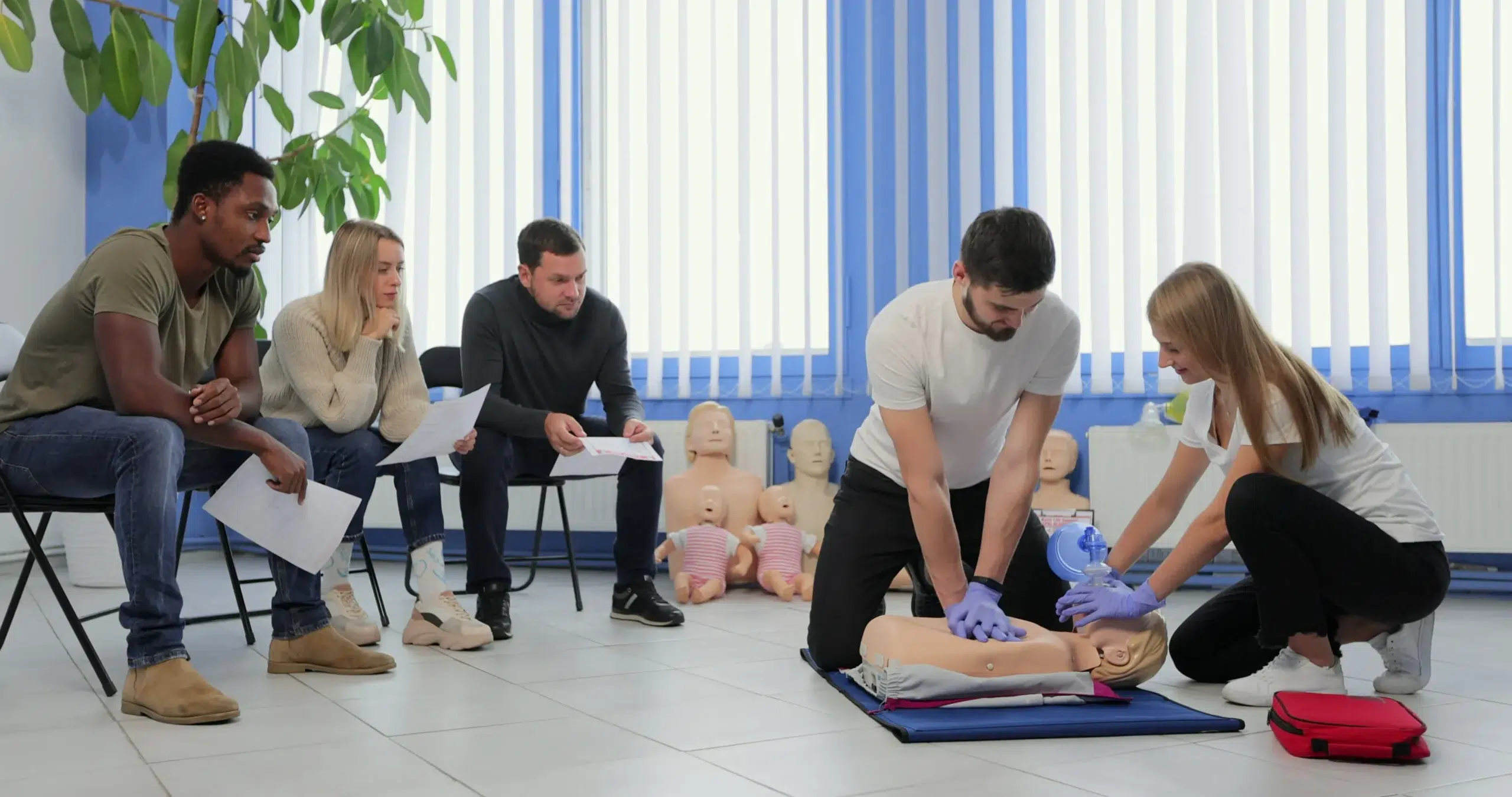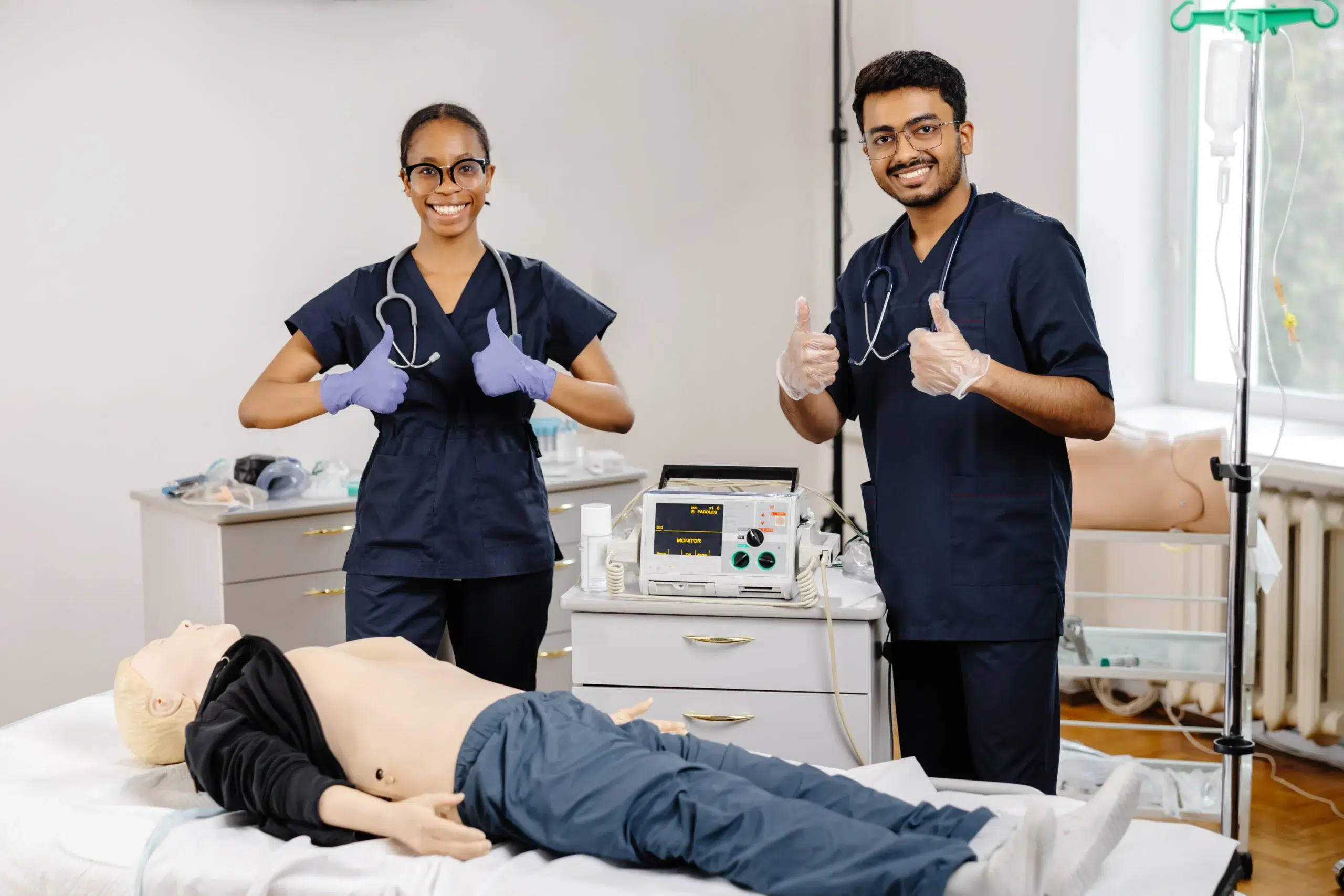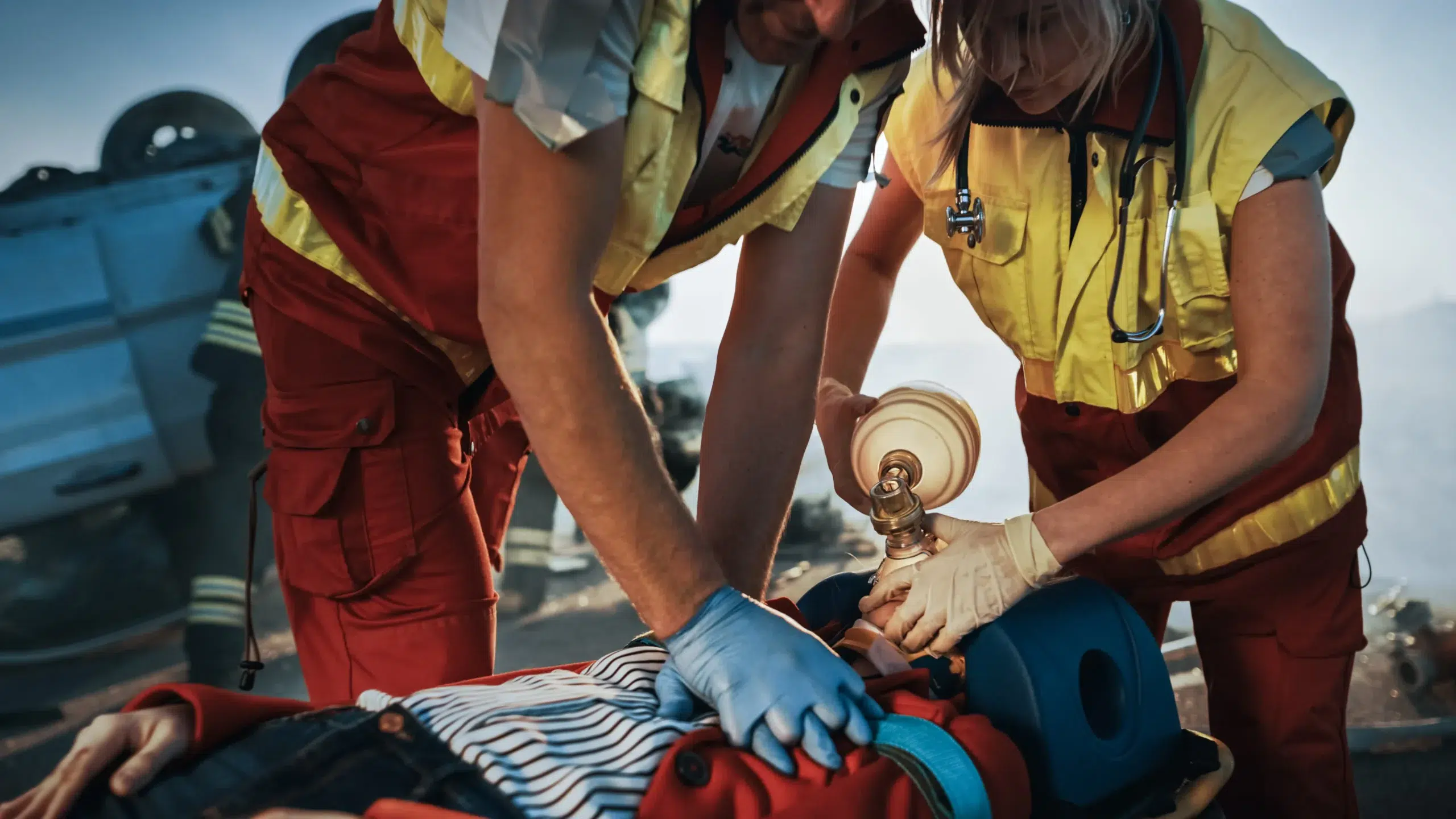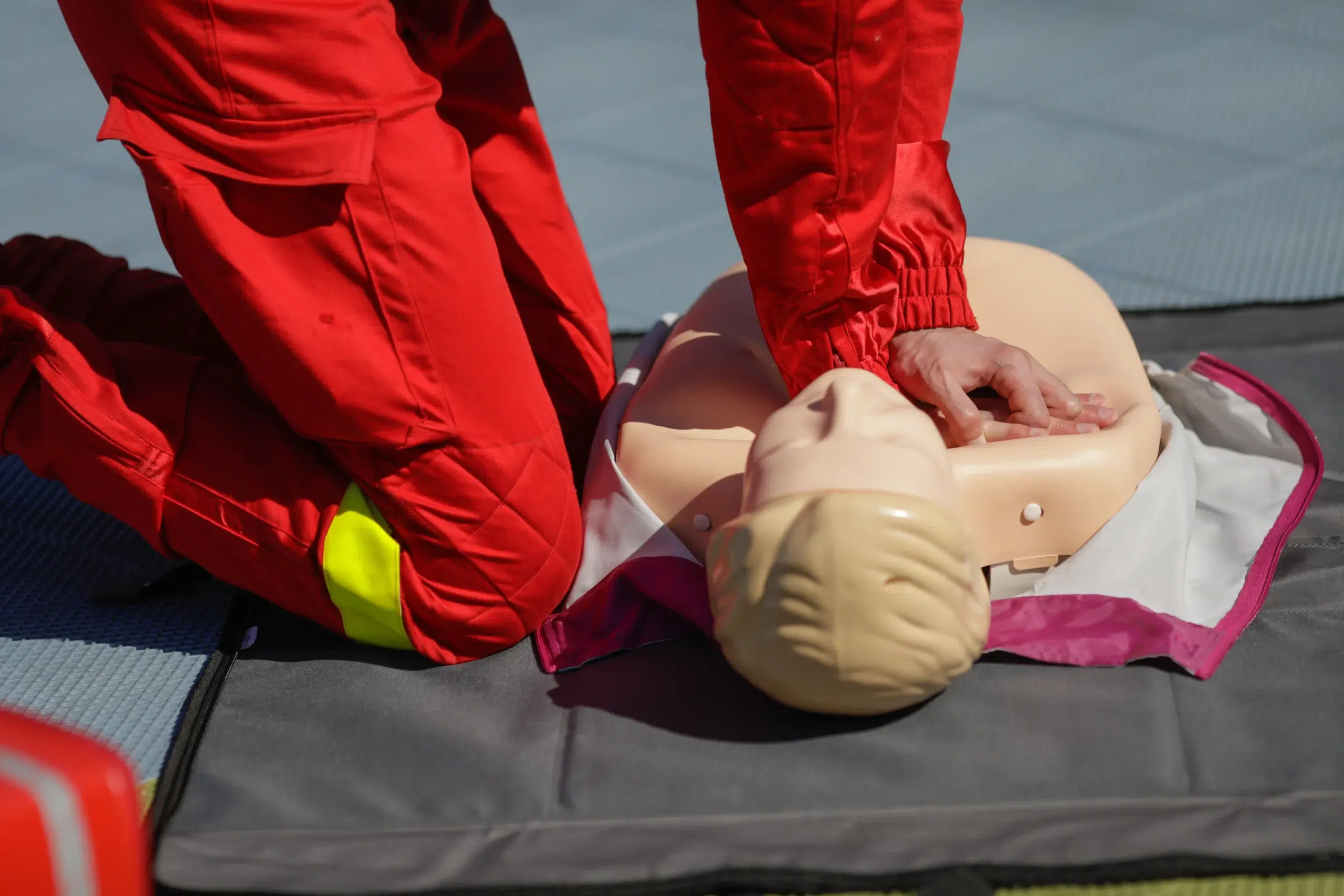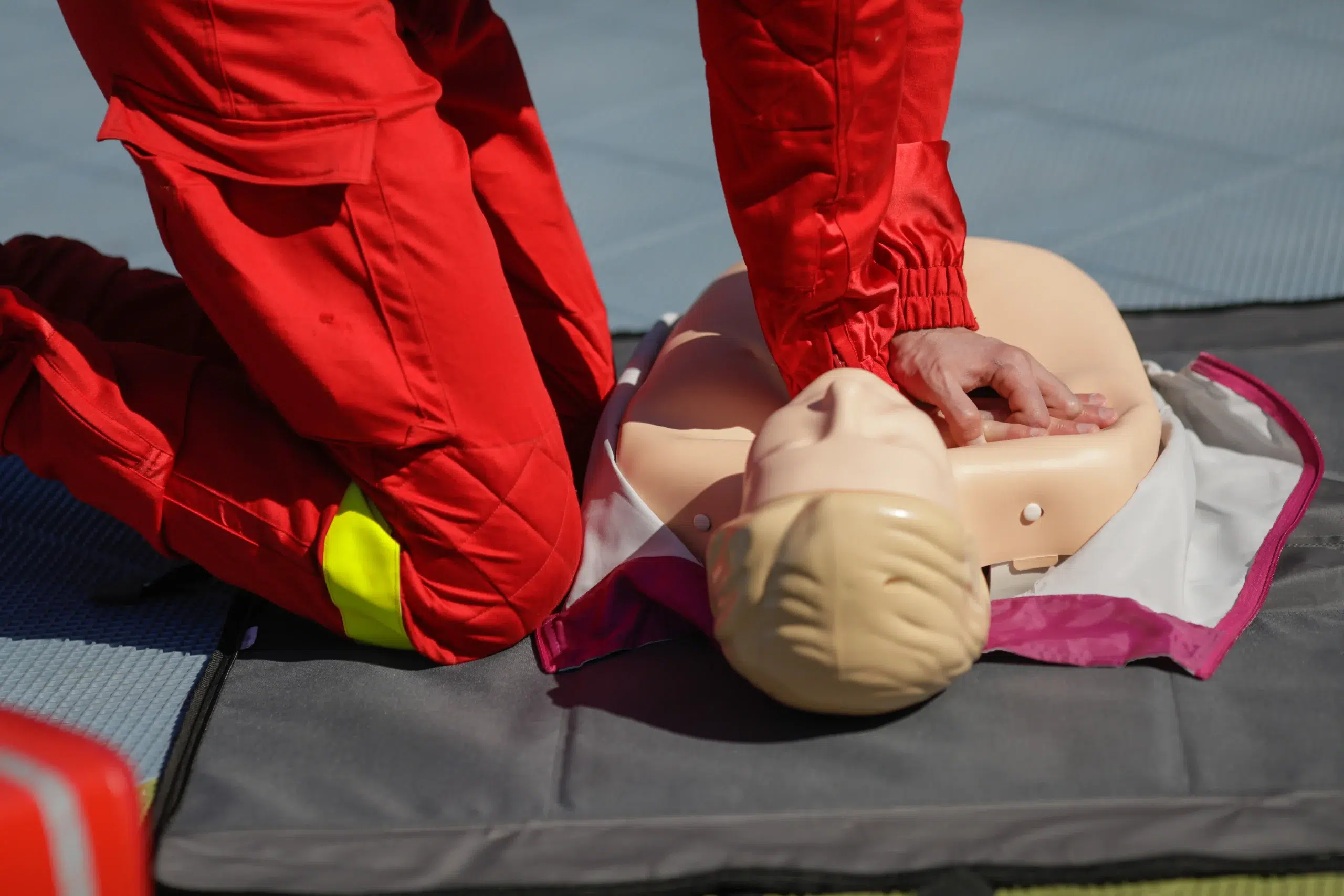Emergencies can happen anytime, anywhere. Are you ready to respond? Hands-on CPR training in San Jose provides you with the practical skills and confidence to make a difference when it matters most. This article explores the key elements of effective hands-on training, including the use of realistic manikins and simulated scenarios. We’ll guide you through the process of getting CPR certified in San Jose, discuss the costs and value of training, and highlight top training providers in the area. We’ll also address common fears and hesitations about CPR, empowering you to take the first step towards becoming a more prepared and confident community member.
Key Takeaways
- Hands-on CPR training builds confidence: Practicing on manikins and working through realistic scenarios prepares you for the emotional intensity and pressure of real emergencies.
- CPR certification is an investment: The skills you gain can save lives and contribute to a safer community. Explore affordable options and understand the long-term benefits of being certified.
- Choose the right CPR course for your needs: Different certifications cater to various professions and levels of expertise. Consider your goals and explore available formats, including online and in-person options.
What is Hands-On CPR Training?
Hands-on CPR training isn’t just about learning the steps; it’s about experiencing them. It moves beyond the textbook and puts you in simulated real-life scenarios where you’ll practice CPR techniques on manikins. This practical approach is essential for building the muscle memory and confidence you’ll need to respond effectively in a real emergency. It’s one thing to read about chest compressions and rescue breaths; it’s another to perform them under pressure. Hands-on training bridges that gap, preparing you to act swiftly and decisively when every second counts.
Why are Practical CPR Skills Important?
Practical CPR skills are crucial for several reasons. First, hands-on training helps you prepare for the emotional intensity of a real emergency. Practicing in simulated scenarios allows you to experience the stress and pressure of these situations in a safe and controlled environment, building your emotional resilience and preparing you to stay calm and focused when facing a real crisis. Second, practical training instills confidence. Mastering the proper techniques through hands-on practice empowers you to take action without hesitation. Knowing you can effectively perform CPR makes you a valuable asset in any emergency. For more insights on the importance of hands-on training, check out these resources from Fireman’s CPR and MyCPR NOW.
Key Components of Hands-On CPR Courses
Effective hands-on CPR courses incorporate key elements to maximize learning. High-quality CPR manikins are essential. These manikins allow you to replicate real-life situations, giving you the opportunity to practice on a realistic representation of a person in need. This builds familiarity and comfort with the physical act of performing CPR. The use of realistic scenarios in training makes the experience more engaging and memorable, improving skill retention and preparing you for the unexpected. You can learn more about the benefits of manikins and real-life scenarios in CPR training from Heart Start CPR and MyCPR NOW. At Safety Training Seminars, our courses in San Jose prioritize these hands-on elements, providing students with the practical skills and confidence they need to make a difference. We offer a range of American Heart Association certification courses, including CPR and First Aid, ensuring you receive comprehensive, high-quality training. You can explore our course offerings for San Jose, Santa Clara, and Sunnyvale and find the right fit for you. Check out our BLS courses and other CPR and First Aid options to get started.
Top Hands-On CPR Training Providers in San Jose
Finding the right CPR training provider is crucial for a positive and effective learning experience. Here’s a look at some of the leading options for hands-on CPR training in San Jose:
Safety Training Seminars
Safety Training Seminars offers a comprehensive range of American Heart Association (AHA) certified courses, including CPR, BLS, ACLS, and PALS. They also provide First Aid and EMSA certifications. Various renewal options are available, such as the RQI program for healthcare providers and renewal courses for certifications like BLS, ACLS, and PALS. You can explore their course calendar for AHA BLS courses and other CPR and First Aid classes. For those seeking affordable options, they also have a low price guarantee.
American Red Cross
The American Red Cross is a well-known provider of CPR and First Aid training in San Jose. Their courses are OSHA compliant and taught by qualified instructors. The Red Cross offers flexible learning options, including in-person classes and blended learning formats that combine online coursework with in-person skill sessions. Learn more about their CPR classes and certification options in San Jose.
Local Community Colleges
Community colleges in San Jose often offer CPR training courses that cater to various needs and skill levels. These courses can range from basic community CPR to more advanced professional certifications. Contact your local community college for specific course offerings and schedules. This resource on CPR training in San Jose can also help you find the right course.
Hospitals and Medical Centers
Many hospitals and medical centers in San Jose provide CPR training, particularly for healthcare professionals. The American Heart Association’s RQI (Resuscitation Quality Improvement) program is a popular option for medical professionals seeking BLS, ACLS, and PALS certification. Learn more about CPR, BLS, ACLS, PALS, and First Aid courses available in San Jose.
CPR Training: Costs and Value
CPR training is an investment in your skills and your community’s well-being. Understanding associated costs and the long-term value helps you make informed decisions about your training.
Average Class Prices
In San Jose, CPR certification costs vary depending on the course type and training provider. Basic CPR classes typically range from $65 to $90. More specialized courses, like those including First Aid, Pediatric CPR, or AED training, may cost a bit more. Compare prices from different providers, like Safety Training Seminars, which offers a low price guarantee. Explore their course calendar for CPR and First Aid classes to see specific pricing. Nationally, CPR certification costs between $40 and $100, so San Jose’s prices align with the national average.
Additional Fees
While the base cost covers instruction and certification, ask about potential additional fees. Some providers charge extra for materials, replacement cards, or other services. Knowing the full cost upfront is always helpful. For example, the San Jose Fire Department is a vital community health and safety resource, but they don’t typically offer regular CPR certification courses to the public. They’re a great information source, but you’ll likely get certified through other organizations.
Long-Term Benefits of CPR Certification
CPR training’s value goes beyond the initial cost. Learning CPR equips you to potentially save a life. The hands-on training, often using realistic simulations with manikins, builds confidence and prepares you to act effectively in emergencies. This practical experience significantly impacts information retention and real-life application. Training with real-life scenarios creates a lasting impression, making you more likely to remember and use these skills when needed. Knowing CPR offers peace of mind and empowers you to help your community.
Get CPR Certified: Process and Expectations
Getting CPR certified is straightforward and empowers you to make a real difference in emergencies. Here’s what you can expect:
Steps to CPR Certification
First, find a reputable training provider, like Safety Training Seminars, offering American Heart Association courses, or the American Red Cross. Browse their course schedules and choose a class that fits your schedule. Register online, which usually involves providing some basic information and paying the course fee. You’ll then receive confirmation and any pre-course instructions.
Course Structure and Duration
CPR courses typically blend online learning with in-person skills sessions. This blended learning approach lets you learn the basics at your own pace before practicing techniques in a hands-on environment. Expect a combination of interactive online modules, instructor-led discussions, and demonstrations. The total time commitment varies, but most basic CPR courses can be completed in a day.
Practical Skills Covered
You’ll learn the core skills needed to respond to cardiac emergencies. This includes performing chest compressions, delivering rescue breaths, and using an AED. Instructors will guide you through each step, ensuring you understand the correct techniques and can perform them confidently. Many courses also cover choking relief and basic first aid.
Assessment Methods
Hands-on practice is a crucial part of CPR training. You’ll work with realistic manikins to simulate real-life scenarios. Instructors observe your technique and provide feedback, helping you refine your skills and build confidence. A written exam may also be included to assess your understanding of CPR principles and protocols.
Certification Validity and Recertification
CPR certifications are typically valid for two years. To maintain your credentials, take a recertification course before your current certification expires. These renewal courses are often shorter than the initial certification course and focus on refreshing your knowledge and skills. Staying current with the latest guidelines ensures you’re always prepared to provide effective assistance.
CPR Instructor Qualifications and Expertise
Knowing your instructor’s background can give you confidence in their ability to teach this critical skill. It also helps to understand how instructors maintain and update their skills to stay at the forefront of best practices.
CPR Instructor Backgrounds
Becoming a certified CPR instructor with the American Heart Association (AHA) involves a multi-step process. Aspiring instructors typically start by completing the required training courses themselves. These courses cover not only CPR techniques but also teaching methodologies and AHA instructor essentials. The good news is that the demand for CPR training is consistently high. This means instructors can often recoup their initial certification costs quickly.
Ongoing Training Requirements
CPR instruction isn’t a static field. Guidelines and best practices evolve, so instructors commit to ongoing training to stay current. This continued education ensures they’re always equipped to deliver the most up-to-date and effective training. Experienced AHA instructors often develop advanced skills in student engagement. This might include using interactive activities, adapting to different learning styles through diverse teaching methods, and incorporating realistic scenarios and hands-on practice.
The Role of Experienced Trainers
The value of an experienced CPR instructor goes beyond simply knowing the steps. They bring a depth of understanding that helps students build genuine confidence. CPR training isn’t just about learning the mechanics—it’s about developing the ability to act quickly and effectively in a real crisis. Experienced instructors create a learning environment where students can practice these life-saving skills on manikins, building muscle memory and comfort in a safe and controlled setting. Hands-on training like this is essential for anyone learning CPR.
Choose the Right CPR Course
Finding the right CPR course means understanding your needs and the different options available. This section breaks down the types of certifications, specialized training, and course formats to help you make an informed decision.
Types of CPR Certifications
CPR certifications aren’t one-size-fits-all. Different certifications cater to various levels of expertise and professional requirements. Basic CPR training provides foundational knowledge and skills for anyone wanting to learn CPR. BLS (Basic Life Support) certification goes a step further, equipping people with the skills to respond to life-threatening emergencies, often including AED (Automated External Defibrillator) training. ACLS (Advanced Cardiac Life Support) is designed for healthcare professionals, covering advanced life-saving techniques. PALS (Pediatric Advanced Life Support) focuses on the specific needs of infants and children. Understanding these distinctions is crucial for choosing a course that aligns with your goals. Safety Training Seminars offers a range of American Heart Association certification courses to meet diverse needs, including CPR and First-Aid.
Training for Specific Professions
Certain professions, particularly those in healthcare, require specialized CPR training. Medical professionals, including doctors, nurses, and EMTs, need comprehensive training that covers various emergency scenarios. For those seeking healthcare-specific training, Safety Training Seminars provides AHA-certified courses tailored to healthcare providers. Other professions, such as childcare providers, lifeguards, and fitness trainers, also benefit from specialized training that addresses the unique needs of their respective fields. For example, childcare providers may want to focus on infant and child CPR techniques.
Online vs. In-Person Options
CPR training comes in different formats, offering flexibility for learners. In-person classes provide hands-on practice and direct interaction with certified instructors. This allows for personalized feedback, which is invaluable for mastering proper CPR techniques. Blended learning options combine online modules with in-person skills sessions. This format offers convenience, allowing people to learn the theoretical aspects online before practicing their skills in a hands-on setting. Consider your learning style and schedule when deciding between online and in-person training. For those seeking in-person training in San Jose, resources like the American Red Cross offer various class options. Safety Training Seminars also offers a low price guarantee, ensuring you receive quality training at a competitive price. More information on their low price guarantee can be found on their website.
Maximize Your Hands-On CPR Training
Hands-on CPR training goes beyond simply learning the steps; it’s about developing the confidence and competence to act quickly and effectively in a real emergency. Here’s how to truly maximize your training experience:
Practice for Skill Retention
Regular practice is key to retaining CPR skills. Like any skill, CPR requires repetition to build muscle memory and maintain proficiency. Hands-on training provides the opportunity to physically practice chest compressions, rescue breaths, and other essential techniques. This practical experience builds confidence and prepares you to respond effectively under pressure. Simulating real-life scenarios during training helps you manage the stress and emotional aspects of performing CPR, allowing you to remain calm and focused in a crisis. Practicing with manikins adds another layer of realism, further enhancing your preparedness.
Apply CPR Knowledge
Hands-on CPR training bridges the gap between theory and practice. While online resources can provide valuable information, they often lack the real-life application that hands-on training offers. Instructors provide immediate feedback, correcting mistakes and ensuring you’re using the proper techniques. This personalized instruction is crucial for developing accurate and effective CPR skills. Plus, practicing on manikins simulates real-life situations, helping you translate your knowledge into action when it matters most. This practical training is invaluable for building the confidence to act swiftly in an emergency.
Stay Updated on Guidelines
CPR guidelines are periodically updated to reflect the latest scientific research and best practices. Staying current with these guidelines is essential for providing the most effective care. Reputable training providers, like Safety Training Seminars, ensure their courses align with the latest American Heart Association standards. By participating in hands-on training, you’ll not only learn the current techniques but also gain access to resources and updates, ensuring your skills remain sharp and relevant. This commitment to staying updated can significantly impact survival rates, which can double or triple with effective bystander CPR. Consider registering for a course with Safety Training Seminars to learn more.
Find Affordable CPR Training
CPR training is an invaluable investment, but we understand cost can be a factor. Thankfully, there are several ways to find affordable CPR training in San Jose without compromising quality. Let’s explore some options to fit your budget.
Group and Corporate Rates
If you’re looking to train a team or group of employees, consider leveraging group and corporate rates. Many CPR training centers, including Safety Training Seminars, offer discounted pricing for larger groups. This can be a smart way for businesses to equip their staff with life-saving skills while saving money. Contact Safety Training Seminars directly to discuss your group training options and explore available discounts.
Promotions and Discounts
Keep an eye out for promotions and discounts offered by various training providers. The American Red Cross often has special offers on their CPR and first aid courses, sometimes including discounts on training materials or course fees. Checking their website or inquiring directly about current promotions can help you find a more budget-friendly option.
Scholarships
In some cases, scholarships may be available to cover the cost of CPR training. While less common, it’s worth exploring this avenue if you’re facing financial constraints. Check with local community organizations, healthcare providers, or even your employer to see if they offer any scholarship programs or can point you toward relevant resources. For healthcare providers seeking recertification, Safety Training Seminars’ RQI program can be a cost-effective way to maintain your certification.
Common CPR Training Misconceptions
It’s normal to feel a little apprehensive about learning CPR. Many people hesitate because they’re worried about making a mistake or causing further injury. Some are uncomfortable with the idea of mouth-to-mouth resuscitation. These are valid concerns, and this section aims to address them head-on. Ultimately, learning CPR empowers you to confidently handle emergencies and potentially save a life.
Address Fears and Hesitations
One of the biggest hurdles to learning CPR is the fear of doing it wrong. It’s natural to feel this way, but remember that any attempt at CPR is better than none. CPR training provides you with the knowledge and skills to perform CPR effectively, minimizing the risk of errors. Plus, instructors create a supportive learning environment where you can practice and ask questions. Don’t let fear hold you back from gaining this life-saving skill. Safety Training Seminars offers a supportive environment to learn and practice.
Debunk CPR Myths
Several myths surrounding CPR can discourage people from seeking training. One common misconception is that only medical professionals need to know CPR. The truth is, anyone can learn and benefit from CPR training. Another myth is that CPR is overly complicated. While comprehensive CPR courses cover various scenarios, the core principles are simple and accessible to everyone. Basic CPR techniques are straightforward and designed to be easily understood and applied by anyone willing to learn.
Legal Protections for CPR Providers
Many people worry about legal ramifications if they perform CPR incorrectly. Good Samaritan laws exist to protect those who offer assistance in emergencies. As long as you act in good faith and within the scope of your training, you’re legally protected. These laws encourage people to help in critical situations without fear of reprisal. This protection ensures that you can focus on providing aid when it matters most. For more information about Good Samaritan Laws, check out this resource from the American Heart Association.
CPR Training’s Impact on Community Safety
CPR training equips individuals with the skills and confidence to respond effectively during medical emergencies, significantly impacting community safety. Learning CPR empowers you to make a real difference.
Increase Survival Rates
Effective bystander CPR dramatically increases survival rates after cardiac arrest. When someone collapses from sudden cardiac arrest, their heart stops pumping blood effectively. Every second without intervention reduces their chances of survival. Bystander CPR helps circulate oxygenated blood to vital organs, buying precious time until professional medical help arrives. Studies show that prompt CPR can double or even triple a person’s survival rate. This immediate action can mean the difference between life and death. CPR certification courses, like those offered at Safety Training Seminars, provide the skills to perform CPR effectively and confidently.
Build Confidence in Emergencies
Knowing how to perform CPR instills confidence and reduces hesitation in emergencies. Many people freeze or feel overwhelmed when faced with a medical crisis. Hands-on CPR training empowers individuals to take charge and provide immediate assistance. This confidence can be crucial in the first few minutes of an emergency, before paramedics arrive. It transforms bystanders into potential lifesavers. CPR classes cover a range of scenarios, helping you feel prepared to respond to various emergencies.
Create a Culture of Preparedness in San Jose
Widespread CPR training creates a more prepared and resilient community. When more people in a community know CPR, the chances of someone receiving immediate help during a medical emergency increase significantly. This creates a safety net, where neighbors, colleagues, and even strangers can step up and provide life-saving assistance. San Jose offers comprehensive safety training resources, including CPR, first aid, and advanced certifications like ACLS and PALS. By taking advantage of these resources, residents can contribute to a culture of preparedness and enhance the overall safety of their community. CPR and first-aid courses are readily available throughout San Jose, Santa Clara, and Sunnyvale, making it easier than ever to become equipped to handle emergencies. You can find a CPR class near you and get certified today.
Related Articles
- 25 Surprising CPR Facts: San Jose CPR Class Guide – San Jose CPR Classes
- CPR Classes in San Jose: Your Complete Guide – San Jose CPR Classes
- Online CPR Classes in San Jose: Your Complete Guide – San Jose CPR Classes
- Pediatric CPR & First Aid Classes in San Jose – San Jose CPR Classes
- How Long is CPR Training Good For? A Guide to Certification – San Jose CPR Classes
Frequently Asked Questions
What does “hands-on” CPR training actually involve? Hands-on CPR training means you’ll be actively practicing the techniques you learn. You’ll use manikins to perform chest compressions, rescue breaths, and other essential skills, giving you realistic practice and building the muscle memory you need to respond effectively in a real emergency. It’s a much more active and engaging learning experience than simply reading about CPR.
How do I choose the right CPR course for me? Consider your specific needs and goals. Are you looking for basic CPR training, or do you need a more advanced certification like BLS or ACLS for your profession? Think about your learning style too. Do you prefer in-person instruction or the flexibility of online learning? Once you have a general idea, research different providers, compare course content, and read reviews to find the best fit.
How much does CPR training typically cost, and what does it include? CPR course fees vary depending on the provider, location, and type of certification. Basic CPR classes are generally more affordable than advanced certifications. The cost usually covers instruction, materials, and the certification card. Some providers may have additional fees for things like replacement cards, so it’s always a good idea to ask about the total cost upfront.
I’m nervous about performing CPR in a real emergency. How can training help me overcome this fear? It’s completely normal to feel apprehensive. Hands-on training helps build confidence by allowing you to practice in a safe and controlled environment. You’ll learn the proper techniques, receive feedback from instructors, and work through simulated scenarios, which helps reduce hesitation and prepares you to act decisively in a real crisis.
How can I stay up-to-date with the latest CPR guidelines after I’m certified? CPR guidelines are periodically updated, so ongoing learning is important. Many certifying organizations offer refresher courses or continuing education opportunities. Staying informed about these updates ensures you’re always equipped to provide the most effective care. You can also check the American Heart Association website for the latest guidelines and updates.
